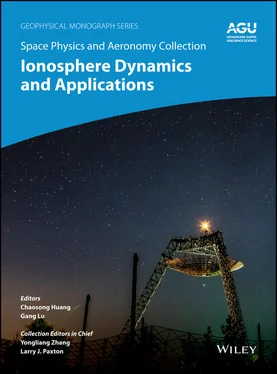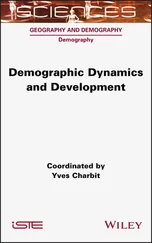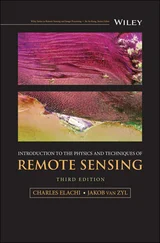Cheryl HuangAir Force Research Laboratory Space Vehicles Directorate Kirtland Air Force Base Albuquerque, New Mexico, USA
Joe D. HubaSyntek Technologies, Inc. Fairfax, Virginia, USA
Takashi KikuchiInstitute for Space-Earth Environmental Research Nagoya University Nagoya, Aichi, Japan
Karl Magnus LaundalBirkeland Center for Space Science University of Bergen Bergen, Norway
Huixin LiuDepartment of Earth and Planetary Science Kyushu University Fukuoka, Japan
Xiaoli LuanSchool of Earth and Space Sciences University of Science and Technology of China Hefei, China; and CAS Center for Excellence in Comparative Planetology Hefei, China
Hermann LührGFZ German Research Centre for Geosciences Potsdam, Germany
Bjørn LybekkDepartment of Physics University of Oslo Oslo, Norway
Larry R. LyonsDepartment of Atmospheric and Oceanic Sciences University of California Los Angeles, California, USA
Lukas MaesMax‐Planck Institute for Solar Systems Research Gottingen, Germany
Astrid MauteHigh Altitude Observatory National Center for Atmospheric Research Boulder, Colorado, USA
Ryan M. McGranaghanScience Division Atmosphere and Space Technology Research Associates Louisville, Colorado, USA and NASA Jet Propulsion Laboratory California Institute of Technology Pasadena, California, USA
Stephen E. MilanDepartment of Physics and Astronomy University of Leicester Leicester, UK; and Birkeland Centre for Space Science University of Bergen Bergen, Norway
Evgeny MishinAir Force Research Laboratory Space Vehicles Directorate Kirtland Air Force Base Albuquerque, New Mexico, USA
David J. NetherwayDefence Science and Technology Group Edinburgh, Australia
Yukitoshi NishimuraDepartment of Electrical and Computer Engineering and Center for Space Physics Boston University Boston, Massachusetts, USA
Anders OhmaBirkeland Center for Space Science University of Bergen Bergen, Norway
Nikolai ØstgaardBirkeland Center for Space Science University of Bergen Bergen, Norway
Yuichi OtsukaInstitute for Space-Earth Environmental Research Nagoya University Nagoya, Japan
Nicholas M. PedatellaHigh Altitude Observatory National Center for Atmospheric Research Boulder, Colorado, USA
Arne PedersenDepartment of Physics University of Oslo Oslo, Norway
Gareth W. PerryDepartment of Physics and Astronomy University of Calgary Calgary, Canada; and Center for Solar‐Terrestrial Research New Jersey Institute of Technology Newark, New Jersey, USA
Sam PullenAeronautics and Astronautics Department Stanford University Stanford, California, USA
Jone ReistadBirkeland Center for Space Science University of Bergen Bergen, Norway
Kristian SnekvikBirkeland Center for Space Science University of Bergen Bergen, Norway
Anatoly StreltsovDepartment of Physical Sciences Embry‐Riddle Aeronautical University Daytona Beach, Florida USA
Paul TenfjordBirkeland Center for Space Science University of Bergen Bergen, Norway
Roland T. TsunodaCenter for Geospace Studies SRI International Menlo Park, California, USA
Todd WalterAeronautics and Astronautics Department Stanford University Stanford, California, USA
Endawoke YizengawSpace Science Application Laboratory The Aerospace Corporation El Segundo, California, USA
Matthew D. ZettergrenDepartment of Physical Sciences and Center for Space and Atmospheric Research Embry‐Riddle Aeronautical University Daytona Beach, Florida, USA
Binzheng ZhangDepartment of Earth Sciences The University of Hong Kong Hong Kong SAR, China
Shun‐Rong ZhangMassachusetts Institute of Technology Haystack Observatory Westford, Massachusetts, USA
Yun‐Liang ZhouDepartment of Space Physics School of Electronic Information Wuhan University Wuhan, China
Shasha ZouDepartment of Climate and Space Sciences and Engineering University of Michigan Ann Arbor, Michigan, USA
The ionosphere is a layer within the atmosphere that extends from about 60 kilometers above the Earth’s surface to about 1,000 kilometers in altitude. It consists of charged particles (i.e., electrons and ions) due to ionization of neutrals by solar radiation and energetic particle precipitation from the magnetosphere.
Since its discovery more than 100 years ago, the ionosphere has become an active research area and our understanding of ionospheric dynamics continues to evolve due to advances in observational technologies and new capabilities in theory and numerical modeling.
Ionospheric dynamics are affected by many different forcings, including solar flares, geomagnetic storms, tides and waves from the lower atmosphere, as well as disturbances triggered by earthquakes and tsunamis. The ionosphere behaves very differently under different solar and geomagnetic conditions, and its variability has direct impacts on radio communication and satellite navigation system.
Although our knowledge of the ionosphere has greatly advanced in recent decades, many important aspects of ionospheric dynamics are still not well understood, especially during geomagnetic storms, because of the complexity of the coupled magnetosphere-ionosphere-thermosphere system.
This book, divided into five parts, provides a comprehensive overview of global ionospheric research ranging from the polar cap to the equatorial region. Part 1 addresses magnetosphere-ionosphere coupling in the high-latitude ionosphere, ion outflow, and ionospheric convection in the polar cap and auroral zone. Part 2 concerns interhemispheric asymmetries, ionospheric structures such as large-scale storm enhanced density plumes, and meso- and small-scale structures in the subauroral and mid-latitude ionosphere. Part 3 focuses on the low-latitude ionosphere, including equatorial ionospheric electrodynamics, equatorial spread F, equatorial electrojet, and equatorial ionization anomaly. Part 4 covers global ionospheric processes such as penetration electric fields, magnetosphere-ionosphere coupling at middle and subauroral latitudes, sudden stratospheric warming impacts on the ionosphere, longitudinal dependence of ionospheric dynamics, and travelling ionospheric disturbances. Part 5 discusses ionospheric effects on HF wave propagation and satellite navigation, as well as ionospheric disturbances caused by earthquakes and tsunamis.
The chapters are written in the form of review articles, providing a coherent description of each topical area. Each chapter includes historical evolution, recent progress, latest results, current understanding, and future challenges of the specific topics. Theoretical analyses, numerical modelings, and observational results from ionospheric radars, satellites, and other space-borne and ground-based instruments are presented.
The book will serve as a useful reference for active researchers and scientists in the space science community, as well as for graduates and upper-level undergraduate students at universities, and engineers and environment officers/operators in government agencies who are interested in space weather applications.
Chaosong Huang Air Force Research Laboratory, Kirtland AFB, New Mexico, USA
Gang Lu National Center for Atmospheric Research, Boulder, Colorado, USA
Читать дальше












